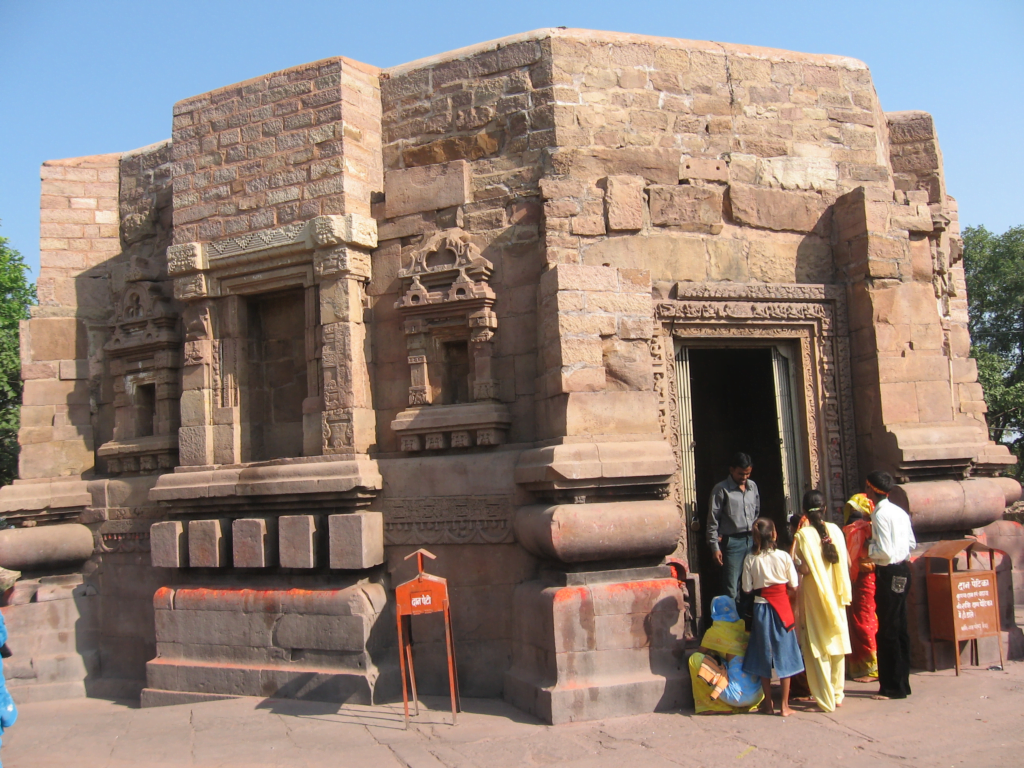Reviewed by Soliu.
Since the dawn of civilization, humans have been building temples to honour and worship their gods. Some of the oldest temples in the world are Göbekli Tepe (Turkey), West Kennet Long Barrow (UK), Tower of Jericho (Palestine), Stonehenge (UK) etc.
For thousands of years, humans have been drawn to sacred places. Since the beginning of time, we’ve been building temples and other structures to connect with something greater than ourselves.
While the world’s oldest temples may be over 5,000 years old, their stories live on. These temples were more than just places of worship – they were also the centers of social, cultural, and political life.
Throughout the millennia, countless temples have been built around the world. But which ones are the oldest? Here are the top 15 oldest temples in the world, in chronological order:
Top 15 Oldest Temples in the World
1. Göbekli Tepe (Turkey)

Göbekli Tepe, located in southeastern Turkey, is often considered the world’s oldest temple complex. It dates back to around 9600 BCE and consists of several large circular structures with T-shaped pillars.
These pillars are adorned with intricate carvings depicting various animals and symbols. Göbekli Tepe challenges traditional archaeological beliefs about the development of complex societies, suggesting that organized religion might have predated agriculture.
The site is thought to have been used as a religious or ceremonial site, and it dates back to the Neolithic period, around 11,500 years ago. It’s believed that hunter-gatherers built Göbekli Tepe before the invention of agriculture or even pottery.
2. Temple of Hatshepsut

The Temple of Hatshepsut, located in Luxor, Egypt, is a stunning example of ancient Egyptian architecture and craftsmanship. Built during the 15th century BCE, this mortuary temple was dedicated to the sun god Amon-Ra and served as a tribute to Hatshepsut, one of the few female pharaohs in Egyptian history.
The temple is carved into the cliffs of Deir el-Bahari, features three terraces adorned with intricate reliefs, statues, and chapels dedicated to various gods, including Anubis, Hathor, and Ra-Horakhty. The temple’s design is characterized by its grand colonnades and Osiride statues of Hatshepsut, showcasing the artistic and engineering prowess of ancient Egyptians.
Despite facing natural erosion and human interventions over centuries, the Temple of Hatshepsut has been diligently restored and preserved. Its historical importance lies not only in its architectural splendor but also in its representation of Hatshepsut’s bold assertion of power as a female pharaoh.
3. Ġgantija (Malta)

The Ġgantija temple, located on the Mediterranean island of Gozo, is a megalithic temple complex that dates back to approximately 3600 BCE.
They date back to around 5,500 years ago, making them older than Stonehenge and the Great Pyramid of Giza. The temples were built in the shape of two large apses, and they’re made of a type of limestone known as coralline limestone. The site was discovered in the early 1800s, and since then, many mysteries have been uncovered about this impressive ancient place of worship.
The temple is known for its massive stone structures, some of which are among the world’s oldest freestanding buildings. The temples are dedicated to a fertility goddess and are UNESCO World Heritage Sites.
4. Tower of Jericho (Palestine)

The Tower of Jericho, also known as the Jericho Citadel, is one of the oldest man-made structures in the world. It was built in Jericho, Palestine, around 9,000 BCE. The tower is thought to have been a ceremonial center, as well as a defensive structure.
The ruins of the tower are now part of a UNESCO World Heritage Site, and they are one of the most important archaeological sites in the region. The tower provides important insights into the ancient cultures of the Near East, and it helps us to understand the development of civilization in this region.
5. Newgrange (Ireland)

Newgrange is a prehistoric monument in Ireland, built around 3200 BCE, making it older than Stonehenge and the Great Pyramid of Giza. The temple consists of a large circular mound, which is made of layered stone, and it has a massive entrance stone. Inside the mound, there’s a passageway that leads to a large central chamber.
It is a passage tomb with a long passage and a central chamber. The chamber has some interesting carvings, such as spirals and geometric patterns. Newgrange is famous for its winter solstice phenomenon, when sunlight illuminates the inner chamber during the sunrise on the shortest day of the year. It was also likely used for religious ceremonies. Newgrange is one of the most important Neolithic sites in Europe.
6. Hagar Qim (Malta)

Hagar Qim is another megalithic temple complex in Malta and is one of the oldest temples in the world. The temple dates back to approximately 3600 BCE and is thought to have been built by a prehistoric civilization known as the Temple Builders.
The complex consists of two temples, both of which have impressive megalithic structures, including massive stone blocks. There are also some intriguing carvings, including spirals, geometric shapes, and carvings of animals and plants.
It is renowned for its well-preserved structures, including a central building and several apses. The site is dedicated to a fertility goddess and is a UNESCO World Heritage Site.
7. Stonehenge (United Kingdom)

Stonehenge is one of the most famous prehistoric sites in the world, and it’s also one of the oldest temples. It’s located in southern England, and it’s made up of large standing stones arranged in a circular formation.
It was built in several stages between 3000 BCE and 2000 BCE. The temple is believed to have served various religious, cultural, and astronomical purposes for ancient societies. Stonehenge is now a UNESCO World Heritage Site.
8. Skara Brae (Scotland)

Skara Brae, located in Orkney, Scotland, is a Neolithic settlement that dates back to around 3100 BCE. It is considered one of the best-preserved Neolithic villages in Europe.
The site features stone-built houses and a complex layout with sophisticated features, including drainage systems, hearths, and a communal workshop. Skara Brae was likely used as a religious center, as well as a place of habitation, and it offers a glimpse into the lives of the people who lived there.
9. Hypogeum of Ħal-Saflieni (Malta)

The Hypogeum of Ħal-Saflieni is an underground temple complex in Malta. It is one of the most impressive prehistoric sites in Malta, which was built between 3,400 and 3,000 BCE. The temple consists of three levels of chambers that were carved out of limestone rock. The chambers include a central room, a main hall, and a series of side rooms.
The site is thought to have been used for religious and ceremonial purposes, and it’s one of the best-preserved underground temples in the world. It’s now a UNESCO World Heritage Site.
10. Knowth (Ireland)

Knowth is a passage tomb in Ireland, constructed around 3200 BCE. It is part of the Brú na Bóinne UNESCO World Heritage Site, which also includes Newgrange and Dowth monuments. Knowth is notable for its rich collection of megalithic art, including decorative stones with intricate carvings.
It features over 300 elaborate carvings and artwork on the stones of the monument, and it’s still a place of mystery for archaeologists and historians.
11. Tărtăria (Romania)

The Tărtăria tablets, discovered in Romania in 1961, are a set of three clay tablets dating back to around 5300 BCE. While not a temple in the traditional sense, these artfacts are significant because they feature some of the earliest known examples of writing or symbols, suggesting early forms of communication and religious expression.
They were found inside a Neolithic dwelling, which may have been a temple or sacred space. The tablets are inscribed with signs that appear to be a form of writing, possibly related to the Vinca script or another prehistoric writing system.
12. Knap of Howar (Scotland)

The Knap of Howar is one of the oldest temples in the world and one of the most preserved stone houses in Europe. It dates back to around 3700 BCE. It is located on the island of Papa Westray, one of the Orkney Islands in Scotland.
The Knap of Howar consists of two stone houses built using dry stone walling techniques. The walls are still standing, and the houses are believed to have been used for both domestic and ritual purposes.The site provides valuable insights into the agricultural practices and domestic life of Neolithic people.
13. Mnajdra (Malta)

The Mnajdra temples, located on the southern coast of Malta, are a prehistoric site that dates back to around 4,000 BCE. The complex includes three main temples, as well as several smaller ones. The temples are believed to have been used for both religious and astronomical purposes, and they feature a variety of intricate carvings and designs.
Mnajdra is one of the most impressive and well-preserved prehistoric sites in the world, and it offers a fascinating insight into the religious beliefs and rituals of the people who lived there.
14. West Kennet Long Barrow (United Kingdom)

The West Kennet Long Barrow, located in Wiltshire, England, is a Neolithic burial mound that dates back to around 3,500 BCE. It’s one of the largest prehistoric sites in the UK, and it’s thought to have been used as a place of burial and ritual for over 2,000 years.
The barrow consists of a long stone mound surrounded by a ring of large upright stones. Inside, there are two chambers and several individual tombs. The West Kennet Long Barrow is an important site for understanding the beliefs and practices of prehistoric people in the UK.
15. Tarxien Temples (Malta)

The Tarxien Temples, located in Malta, are a group of four megalithic temples that are some of the oldest in the world. The temples date back to around 3,600 BCE, and they were built using large stone blocks. The temples are known for their complex design, with features such as carved reliefs, statues, and wall decorations.
It’s thought that the temples were used for religious ceremonies and rituals, and some of the carvings have been interpreted as depicting fertility or mother goddess figures. The temples are dedicated to various deities and are UNESCO World Heritage Sites.
Where is the World’s First Worship Place?”
According to experts, it is believed that the world’s first place of worship was Göbekli Tepe, located in present-day Turkey. It also tops the list of oldest temples in the world. This archaeological site is thought to have been used for ritual purposes as early as 12,000 years ago.
There is evidence that people gathered there to perform ceremonies, including feasts and animal sacrifices. While there is some debate about whether or not Göbekli Tepe was actually a place of worship, it is clear that it was an essential site for early humans. It remains a significant place of archaeological study today.

What is the Oldest Temple in Europe?
The oldest temple in Europe is Stonehenge, a prehistoric monument located in Wiltshire, England. The exact purpose of Stonehenge is still debated, but it is widely believed to have been a site of religious or ceremonial significance.
Radiocarbon dating indicates that the monument was built between 3000 and 2000 BCE, making it over 5,000 years old. It is one of the most famous Neolithic monuments in Europe and has been designated a UNESCO World Heritage Site.
Which is the Largest Temple in the World?
The Angkor Wat temple complex, located in Cambodia, is considered to be the largest religious monument in the world. It covers an area of over 200 hectares, or 500 acres, and includes a central temple surrounded by smaller temples, as well as numerous ponds and gardens.
The temple was built in the 12th century as a Hindu place of worship but later became a Buddhist site. Today, it is a famous tourist center, attracting over 2 million visitors each year. It is also a UNESCO World Heritage Site, recognized for its cultural and historical significance.
Conclusion
The oldest temples in the world tell a story of human evolution. For thousands of years, people have been using these structures to connect with something bigger than themselves. They are more than mere buildings – they are testaments to the human imagination and our endless search for meaning.
Even though they were built thousands of years ago, the stories they tell about the human spirit are just as relevant today as they were then. The temples show us that regardless of our cultural, religious, or political differences, we are all connected by our shared humanity. No matter how far we have come, these temples remind us that the spirit of humanity is eternal.










